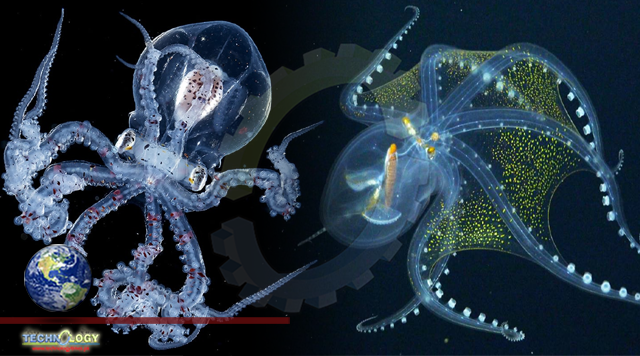An incredibly rare and eerie-looking ‘glass octopus’ has been photographed by deep-sea scientists during a recent expedition in the central Pacific Ocean.

An incredibly rare and eerie-looking ‘glass octopus’ has been photographed by deep-sea scientists during a recent expedition in the central Pacific Ocean.
Photos of the one-of-a-kind creature have now been circulated on social media.
The discovery was made after scientists spent around 34 days aboard the Schmidt Ocean Institute research vessel to explore the remote Phoenix Islands archipelago.
The team carried out high-resolution seafloor mapping of more than 30,000 kms. They also carried out a camera exploration of five additional seamounts.
According to reports, the study is believed to be ‘the most comprehensive study of deep-sea coral and sponge ecosystems in this part of the world’.
The scientists noted the octopus is rare and almost completely transparent, with just three visible features – the optic nerve, eyeballs, and a digestive tract.
“It has been very inspiring to help document the biodiversity of unexplored seamounts on the high seas and in U.S. waters,” said expedition Chief Scientist Dr. Randi Rotjan.
“We’re at the beginning of the UN Decade of Ocean Science for Sustainable Development, so now is the time to think about conservation broadly across all oceanscapes, and the maps, footage, and data we have collected will hopefully help to inform policy and management in decision making around new high seas protected areas,” he added.
It is said that photos and live footage of the octopus were very rare before this expedition.
This meant scientists had to rely on studies and specimens discovered in earlier expeditions.
Dr. Jyotika Virmani, executive director of Schmidt Ocean Institute, said the expedition is a ‘remarkable example of frontier science and exploration’.
Originally published at Times now news